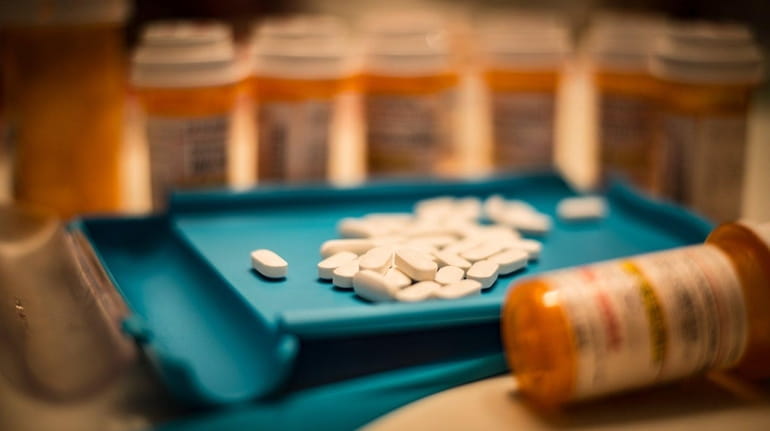Donald Trump’s drug plan is no cure for high prescription costs

President Donald Trump's drug plan doesn't include allowing the Health and Human Services secretary to negotiate drug prices with Big Pharma on behalf of Medicare beneficiaries. Credit: iStockphoto
At first glance, last week’s decision by Pfizer to postpone price hikes seemed like a victory in the fight to reduce the crushing costs of medications.
President Donald Trump certainly saw it that way, declaring it was “great news for the American people!”
If it were only that simple.
Indeed, Pfizer’s plans, and Trump’s talk of curbing drug prices, are far more placebo than meaningful treatment — and patients will continue to feel the pain in their wallets.
Pfizer said it will defer price increases until the end of 2018, or when Trump’s so-called drug-price “blueprint” goes into effect — whichever comes first. So patients are getting only a brief reprieve, with no assurance of any significant or more permanent relief to come.
Trump’s blueprint, released in May, doesn’t go far, providing broad promises and tough rhetoric but few detailed reforms and no timetable. Experts suggest any change is unlikely before year’s end, which means that by January, Pfizer, a drug giant with $52.6 billion in revenue, could go right back to hiking prices on widely used drugs like the pain medication Lyrica and the blood-pressure drug Norvasc.
This is a missed opportunity for Trump, who during his State of the Union address in January highlighted prescription drug costs as a key issue.
“. . . I have directed my administration to make fixing the injustice of high drug prices one of our top priorities,” Trump said. “Prices will come down.”
But they haven’t.
Trump has boasted about being a dealmaker, a negotiator. But his drug plan doesn’t include one of the most fundamental steps for drug-price reform: Allowing the Health and Human Services secretary to negotiate drug prices with Big Pharma on behalf of Medicare beneficiaries.
This has been a flaw ever since the 2003 legislation that created the Medicare Part D prescription drug-insurance program prevented the government from negotiating with drug companies. President Barack Obama vowed to correct it, but didn’t. On the campaign trail, Trump promised to “properly negotiate” drug prices. A whopping 92 percent of Americans support the idea.
But the pharmaceutical lobby is strong. According to the Center for Responsive Politics, the pharmaceutical and health products industry spent a staggering $279.6 million on federal lobbying in 2017.
So, here we are, with a proposal on the table that omits giving Medicare any bargaining power.
More than 43 million seniors and people with disabilities use Medicare Part D to pay for prescription drugs. While their costs on generic drugs are often quite low, many must pay high prices when it comes to brand names, which often don’t have a cheaper substitute, especially since there’s no cap on out-of-pocket costs. As of 2016, Medicare was responsible for 29 percent of prescription drug spending.
This is an area in which the government is a significant player, and therefore has the potential power to affect the broader marketplace.
But giving bargaining power to Medicare is also a solution the pharmaceutical companies rail against, saying it will damage drug research, innovation and development.
Is that dissent why Trump skirted the issue in his plan? Perhaps. Remember that Health and Human Services Secretary Alex Azar was the president of Eli Lilly & Co.’s U.S. division. Eli Lilly’s portfolio includes an insulin drug and other diabetes drugs. While Azar was at Eli Lilly, the insulin’s price tripled.
Of course, drug prices won’t drop solely with a Medicare fix. But they also won’t get cheaper with Trump’s very incremental suggestions. Requiring the disclosure of drug prices in advertising is important, but won’t have a big impact on patient costs. Targeting pharmacy benefit managers — the middlemen who manage prescription drug benefits — and the rebates they get from drugmakers is feasible and worthwhile, but might not have any real effect on the prices consumers pay, since the manufacturers set prices.
Other ideas, like somehow forcing other countries to pay more for drugs without a clear strategy or leverage, appear unrealistic, and also are unlikely to affect pricing here, even though the tactic might boost drug companies’ profits. And there’s little in Trump’s plan to remove obstacles to or otherwise promote the manufacture of generic drugs, which should be a critical component of any effort to reduce drug prices.
All of that might explain why the reaction to Trump’s plans from pharmaceutical giants, and their investors, has been tepid, and why Pfizer was so willing to raise certain prices even after May 30, when Trump promised “voluntary massive drops in prices.”
Trump has an opportunity to transform his fuzzy blueprint into meaningful action. He can show just what kind of a negotiator he is, move beyond the placebo, and prescribe a plan that can end the pain in the pocketbook.
